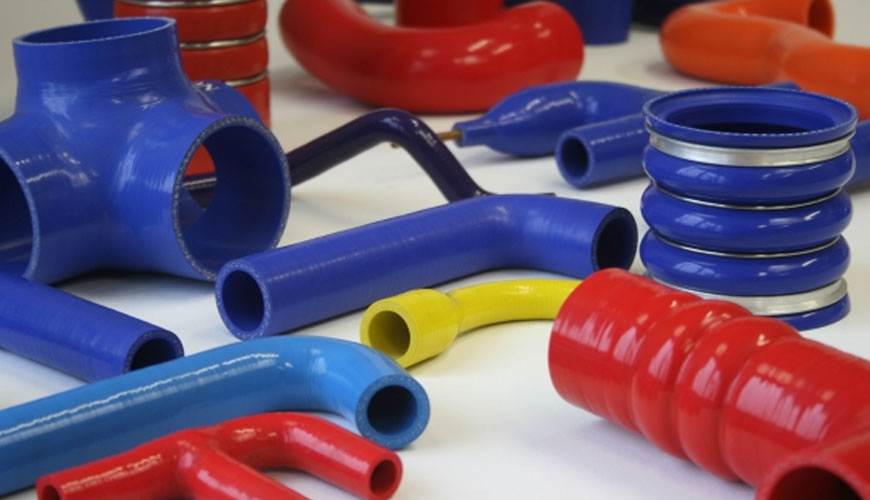

EUROLAB, with its state-of-the-art accredited laboratories and expert team, provides precise and fast testing services within the scope of ISO 10619-2 testing. This standard specifies two methods for measuring stiffness and a method for determining the flexibility of rubber and plastic hoses and pipes when bent to a specified radius below ambient temperature.

Method A is suitable for non-collapse rubber and plastic hoses and pipes with a bore up to (inclusive) 25 mm. This method provides a means of measuring the hardness of the hose or tube when the temperature is lowered from a standard laboratory temperature.
Method B is suitable for rubber and plastic hoses and tubing with a bore of up to 100 mm and provides a way to evaluate the flexibility of a hose or tube when bent around a mandrel at a given sub-ambient temperature. It can also be used as a routine quality control test.
Method C is suitable for rubber and plastic hoses and tubing with a diameter of 100 mm or greater. This method provides a means of measuring the stiffness of hose and pipe at temperatures below ambient. This method is only suitable for non-collapsible hoses and tubes.
A wheel with a diameter equal to twice the minimum bend radius specified for the hose is provided with equipment to keep the hose tangential to the wheel, a suitable device for bending the hose around the wheel, and a strain gauge and chart recorder to measure it. If no minimum bend radius is specified, the diameter of the torque wheel must be equal to 12 times the nominal bore of the hose.
The coolant should not affect the hose under test and should be used as specified in ISO 23529. A suitable coolant is methanol or ethanol with added crushed dry ice (solid carbon dioxide). Gaseous refrigerants may be used when the design of the apparatus is such that tests using such refrigerants yield results equivalent to those obtained with liquid refrigerants.
The hose test piece must be cut from the hose under test and have a length longer than at least 10% of the circumference of the mandrel used. The specimen must be long enough to allow the specimen to be gripped at each end, in addition to the portion to be bent around the circumference of the mandrel.
EUROLAB assists manufacturers with ISO 10619-2 test compliance. Our test experts, with their professional working mission and principles, provide you, our manufacturers and suppliers, the best service and controlled testing process in our laboratories. Thanks to these services, businesses receive more effective, high-performance and quality testing services and provide safe, fast and uninterrupted service to their customers.
To get an appointment, to get more detailed information or to request an evaluation, you can ask us to fill in our form and reach you.